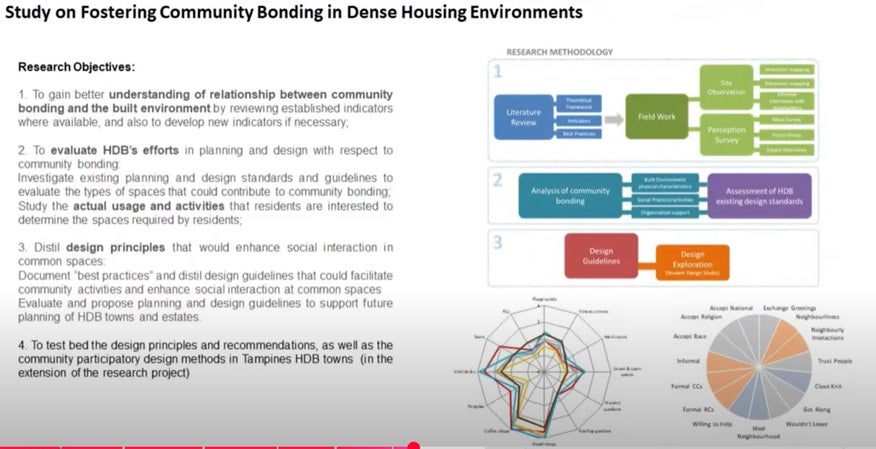Study on Impact of Built Environment on Community Bonding
Principal Investigator: Assist. Prof. Dr CHO Im Sik
Co-Principal Investigator: Assist. Prof Dr. Tan Beng Kiang
Key Collaborating Agency: HDB
Background
With HDB estates being the place where 80% of the population lead their daily lives, develop social relationships and where common norms and sentiments develop and evolve, it is critical for HDB to take on a more active role in facilitating, encouraging and deepening community bonding through its planning and design of towns. This is even more so given a fast-changing social fabric – vocal youths, ageing population and growing social diversity.
A review of overseas literature and academic studies has shown that urban design does have an effect on social interaction and bonding and conducive spaces can be planned and designed to provide the community with a positive social setting to enhance experience and facilitate active public interaction. For example, connecting pathways, walkability to facilities and the provision of steps have been proven to facilitate social encounters and interaction overseas. However, such case studies, though insightful, might not be entirely applicable in Singapore's context.
It would therefore be meaningful to conduct a study to investigate the success of HDB’s planning and design efforts from a community bonding perspective so as to understand conditions conducive for community activities and positive interaction between strangers and non-strangers in the public realm. Design principles that are crucial to facilitate accidental encounters and active public interaction in the local context could be distilled from the study for application in new precincts or those under upgrading.
Research Objectives
This research entails a proposal to conduct a study to examine the influence and impact that the built environment has on community bonding. The study aims:
1) To gain a better understanding of the relationship between community bonding and the built environment;
2) To evaluate HDB’s efforts in planning and design with respect to community bonding;
3) To examine existing facilities and find out which types of spaces could positively contribute to community bonding;
4) To investigate the types of preferred usage and activities that residents are interested in;
5) To distil design principles that would enhance social interaction in common spaces;
6) To document “best practices” and distil design guidelines that facilitate community activities and enhance social interaction at common spaces;
7) To evaluate and incorporate design guidelines into HDB’s design checklist for future contracts, where appropriate.



